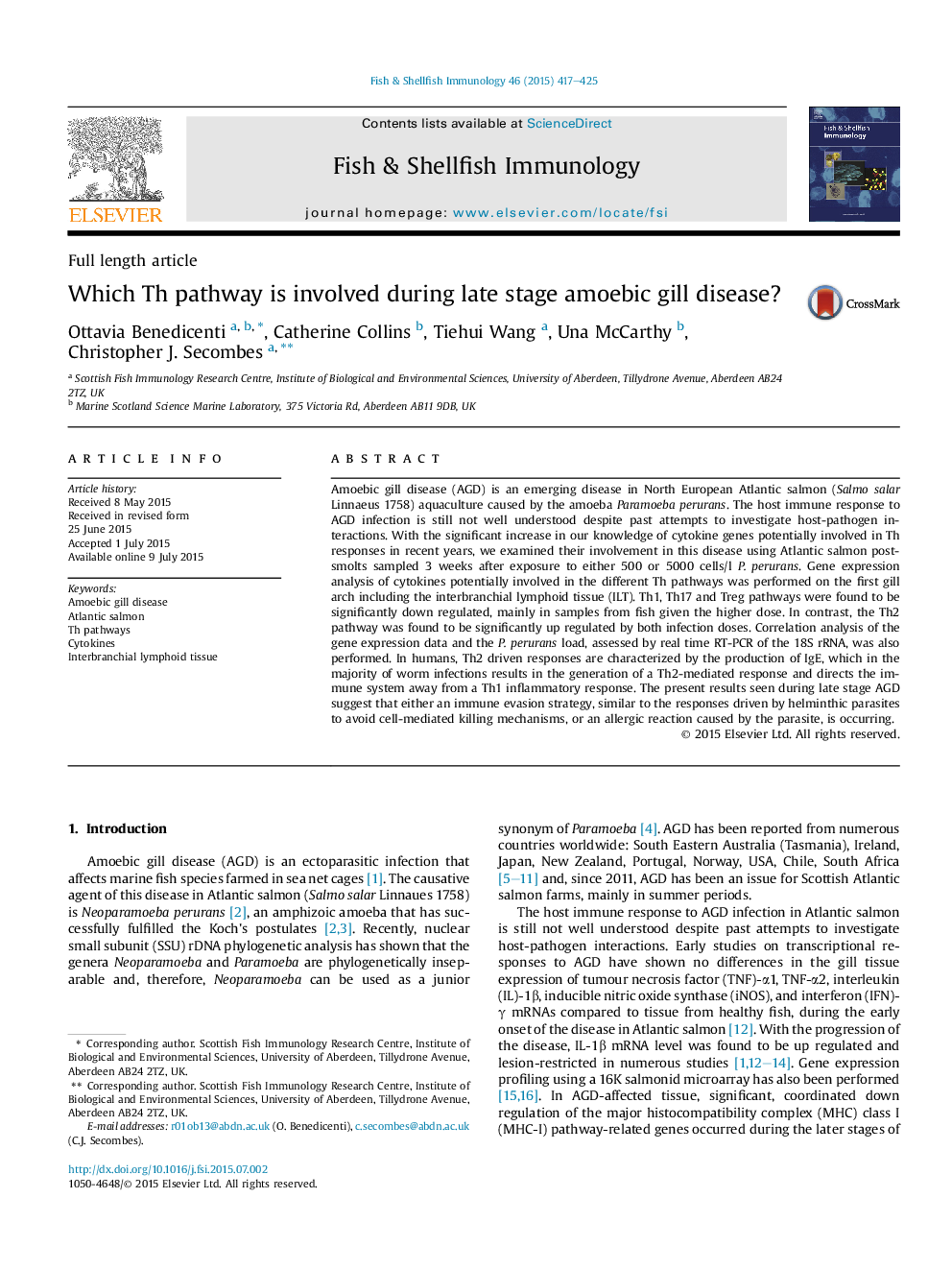| کد مقاله | کد نشریه | سال انتشار | مقاله انگلیسی | نسخه تمام متن |
|---|---|---|---|---|
| 2431169 | 1106745 | 2015 | 9 صفحه PDF | دانلود رایگان |
• This report describes the characterisation of T helper responses to AGD.
• Gene expression of cytokines has been screened in the ILT of Atlantic salmon.
• Cytokines related to Th1, Th17 and Treg pathways were found down-regulated.
• Expression analysis revealed a high expression of IL-4/13A and IL-4/13B1.
• A mechanism of immune evasion or allergic response might be elicited.
Amoebic gill disease (AGD) is an emerging disease in North European Atlantic salmon (Salmo salar Linnaeus 1758) aquaculture caused by the amoeba Paramoeba perurans. The host immune response to AGD infection is still not well understood despite past attempts to investigate host-pathogen interactions. With the significant increase in our knowledge of cytokine genes potentially involved in Th responses in recent years, we examined their involvement in this disease using Atlantic salmon post-smolts sampled 3 weeks after exposure to either 500 or 5000 cells/l P. perurans. Gene expression analysis of cytokines potentially involved in the different Th pathways was performed on the first gill arch including the interbranchial lymphoid tissue (ILT). Th1, Th17 and Treg pathways were found to be significantly down regulated, mainly in samples from fish given the higher dose. In contrast, the Th2 pathway was found to be significantly up regulated by both infection doses. Correlation analysis of the gene expression data and the P. perurans load, assessed by real time RT-PCR of the 18S rRNA, was also performed. In humans, Th2 driven responses are characterized by the production of IgE, which in the majority of worm infections results in the generation of a Th2-mediated response and directs the immune system away from a Th1 inflammatory response. The present results seen during late stage AGD suggest that either an immune evasion strategy, similar to the responses driven by helminthic parasites to avoid cell-mediated killing mechanisms, or an allergic reaction caused by the parasite, is occurring.
Journal: Fish & Shellfish Immunology - Volume 46, Issue 2, October 2015, Pages 417–425
